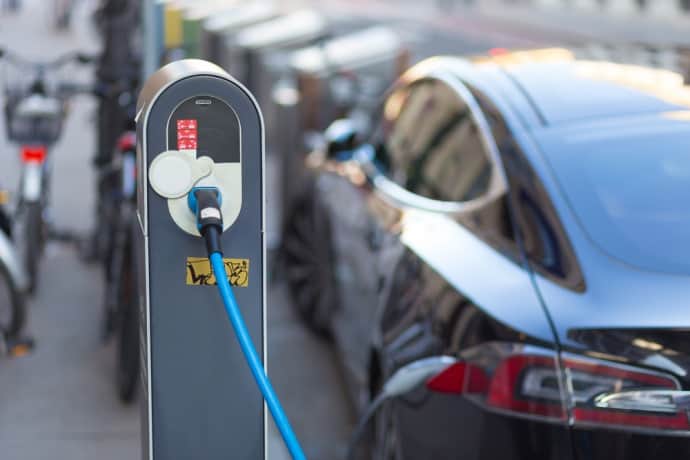
Materials originally developed for soft contact lenses have energy storage properties that could rival the best lithium ion batteries currently available, according to its developer. A series of serendipitous results led Dr Donald Highgate, director of research for Superdielectrics Ltd and alumnus of Surrey University, to realise that material originally developed for quite different applications was outperforming energy storage materials currently on the market, and he now believes these materials could form a vital link in systems to charge large numbers of electric cars.
“I started this about 40 years ago with materials that went on to form the basis of extended wear contact lenses,” Highgate told The Engineer. “So it’s an aqueous hydrocarbon polymer. But we then wondered whether we could use this material as the basis for membranes in fuel cells. Conventional wisdom then said you could only use fluorocarbons because they were more resistant to corrosion. But we found that if you cross-linked all the polymer chains together the material became corrosion resistant because there are no loose ends. I put some sulphonyl into the mix so that it became electrically active and that material now forms the basis for the membranes and electrolysers produced by ITM Power, of which I was a founder.”
“The next step was to determine whether we could make the material electronically active, and we found that we could. We were trying to make a biocompatible material that could be used to link prosthetics directly into the nervous system, and we sent samples to the University of Bristol for testing. They came back to us and said ‘do you realise you’ve got dielectric properties a thousand times better than our best electrolytes?’ At that point, which was at the end of 2016, we changed our focus away from biocompatibles and towards supercapacitors.”
At the testing point, Highgate was only producing quantities around the size of a rice grain. Production has now been scaled up to the point where the polymer can be coated onto metal foil electrodes in simple demonstration devices. Single-layer cells can be charged to 1.5V for two-to-five minutes and then run a small electric fan. A three cell series stack can be rapidly charged to 5V and run an LED light.
The material achieves practical capacitance values of up to 4F/cm2 with a smooth electrode; existing supercapacitors typically only reach 0.3F/cm2 and rely on complex extended surface area materials. Moreover, the researchers claim, using a specially treated stainless steel electrode – the details of which are classified pending a patent application – the material achieves results of 11 to 20F/cm2. Bristol University is working on a complex series-parallel cell structure in which total capacitance and operating voltage can be controlled separately
If these capacitance values can be achieved in production, the resulting supercapacitors could achieve any densities up to 180Whr/kg – better than lithium ion batteries.
Supercapacitors have different charge and discharge characteristics to batteries. While batteries charge and discharge slowly, supercapacitors charge and discharge very fast. Until now they have only had around a 20th of the energy density per kilogram of battery technology and have not been able to compete with batteries. Supercapacitors currently power electric buses in China, but need to be charged at almost every bus stop.
High capacity supercapacitors could be a vital component in charging electric cars. “If you’re charging a lot of cars, that puts a lot of strain on the grid,” Highgate said. “If you have a buffer between the grid that can accept charge and release it quickly, you take that strain away. Supercapacitors can form that buffer.”
Highgate also believes these supercapacitors have potential in grid level energy storage to balance out the intermittency of renewables.
“The advantage is, it is based on an aqueous material with nothing toxic, no rare earths and no reliance on scarce minerals,” he told The Engineer. In a statement, he added: “This new work would transform the energy system which underpins our entire way of life – it is the necessary development before we and our children can have a genuinely sustainable, environmentally safe energy supply.”




IEA report claims batteries are ‘changing the game’
Batteries come with major weight penalties in vehicles and to date have only achieved very limited application in the rail sector where range and...